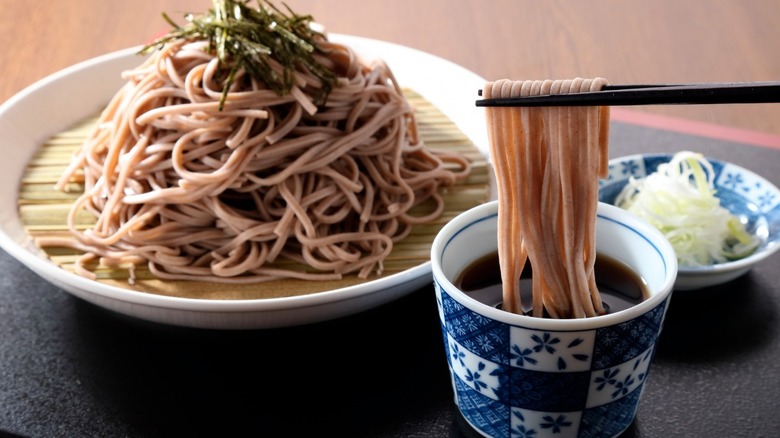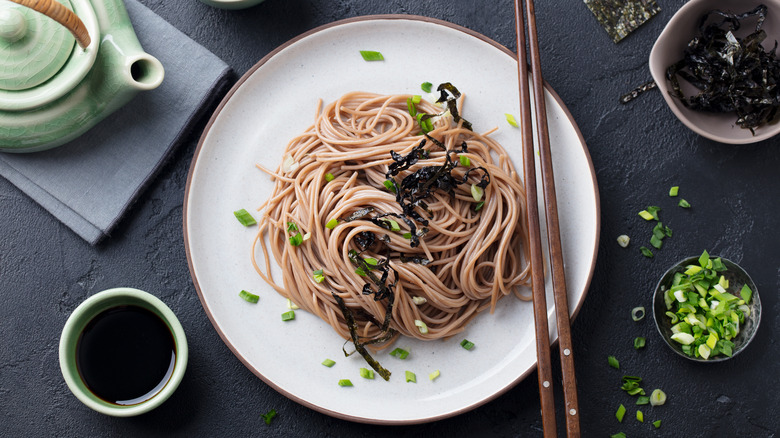The All-You-Can-Eat Soba Noodle Challenge You Can't Miss In Japan
Servers sling small red and black lacquered wooden bowls in quick succession as diners face the task of eating as many bite-sized portions of chewy soba noodles as they can. The empty bowls, once filled with the long, brown Japanese buckwheat noodles known for their rich, nutty flavor, begin to tower around diners (per CNN). While they eat, servers chant, "Hai jan jan, hai don don," rallying contestants to eat more. Wanko soba, the Japanese all-you-can-eat soba noodle challenge has attracted local residents and tourists alike to Iwate Prefecture's capital city, Morioka.
Azumaya, one of the most famous wanko soba restaurants in Morioka, offers English-printed menus and vegan-friendly versions of their broth, traditionally made from bonito flakes, a type of dried, thinly shaved preserved fish. At Azumaya, the feast could cost those up for the challenge an average of 3,150 to 3,700 Japanese yen, or $21.18 to $24.88. In order to win, you must eat without stopping, and chewing the noodles is only optional. A variety of side dishes may be tempting to cleanse the palette between slurping bowls of soba, but don't let the fresh tuna sashimi, cooked minced chicken, mushrooms served with grated daikon radish simmered in soy sauce, or the range of other tiny, fresh dishes distract you from the main goal. The soba-eating record-holders include a man from Osaka, who managed to down 500 bowls. But a woman in Morioka ate up to 570 small bowls, claiming victory for now (per Azumaya).
What are the origins of wanko soba?
In the regional dialect of the Iwate Prefecture on Japan's northeastern coast, "wanko" means "bowl," but more specifically, it refers to a small, wooden Japanese soup bowl. The founders of Azumaya Soba Shop told CNN that the challenge emerged from the region's mountainous terrain, where the low temperatures and high altitudes allowed farmers in the Nanbu area, neighboring the Iwate Prefecture, to easily grow soba noodles for sustenance.
The origins of the dish itself and the all-you-can-eat phenomenon are murky. One main theory dates back to the 16th century, when Nanbu Toshinao, a territorial lord from the Nanbu clan, arrived in Hanamaki and received soba in a small soup bowl. The local residents who served him this dish feared it was too rustic a meal for someone of such status, so they accompanied it with an array of fancy side dishes — maybe some sashimi, or miso-pickled daikon radishes, maybe Nameko mushrooms, or an assortment of dipping sauces. But Nanbu was pleased with the soba and asked for more and more. Over time, serving continuous small bowls of freshly-boiled soba until guests are satisfied became a tradition of the region (per Food in Japan).

